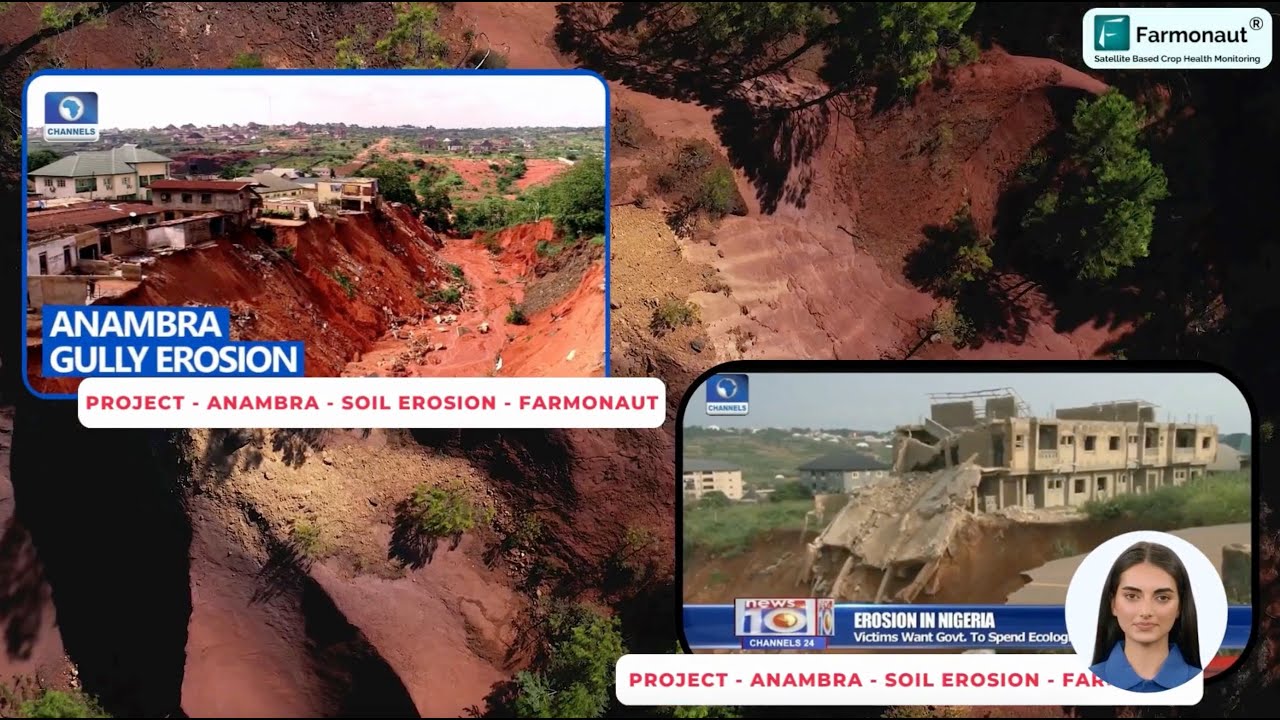Fluoride in Idaho Drinking Water: 7 Key Facts on Safety and Benefits
“Over 70% of Idaho’s public water systems contain naturally occurring fluoride, often below the recommended safe level.”
Table of Contents
- Introduction: Why Talk About Fluoride in Idaho Drinking Water?
- 1. Fluoridation Roots: Idaho’s Historic Role in Water Fluoridation
- 2. Fluoride Levels in Idaho’s Public Water Systems
- 3. Water Fluoridation Benefits: Dental Health in Idaho Communities
- 4. Safe Amount of Fluoride in Water: What Is Recommended?
- 5. Public Opinion and Policy Decisions in Idaho
- 6. Risks and Benefits of Water Fluoridation: Evidence-Based Insights
- 7. Idaho’s Future: Maintaining Safe Drinking Water and Community Oral Health
- Comparative Data Table: Fluoride Levels in Idaho Cities
- Farmonaut: Precision Agriculture for a Healthier Future
- FAQ: Fluoride in Idaho Drinking Water
- Conclusion: Informed Decisions for Idaho’s Water and Health
Introduction: Why Talk About Fluoride in Idaho Drinking Water?
As we explore the topic of fluoride in Idaho drinking water, it’s crucial to understand how our local water supply impacts community health, public trust, and family wellbeing. In recent years, few subjects in public health have stirred as much debate within Idaho as water fluoridation—a process once celebrated as a great public health achievement, now re-evaluated under the lens of new data, changing attitudes, and local priorities.
This blog dives deep into Idaho’s unique story: the state’s historic significance in discovering the effects of fluoride, how fluoride levels in public water systems vary from city to city, and how our citizens, from Boise to Sandpoint, are shaping the future of water safety. By understanding the risks and benefits of water fluoridation, we empower ourselves with knowledge to advocate for our families and communities.
We’ll also see how innovative technologies in agriculture—such as Farmonaut’s precision insights using satellite data—parallel trends in water quality management, driving the same data-driven, cost-effective, and transparent improvements. Our journey starts with Idaho’s remarkable connection to the history of water fluoridation itself.
1. Fluoridation Roots: Idaho’s Historic Role in Water Fluoridation
Discovery of Fluoride’s Dental Impact – A Rocky Mountains Origin
Most might not realize that Idaho, nestled in the vast reaches of the Rocky Mountains, played a pivotal role in unveiling the effects of fluoride in drinking water. In the early 1900s, strange brown stains—later known as “Colorado Brown Stain”—began appearing on the teeth of residents in Colorado Springs. A young dentist’s investigation led him to Oakley, Idaho, where parents noticed similar dental issues after the city constructed a new communal water supply.
Through systematic inquiry, it was discovered that these brown stains—now termed dental fluorosis—were caused by naturally occurring fluoride in Idaho water. Remarkably, while the stained teeth looked different, they were resistant to tooth decay. This insight paved the way for controlled water fluoridation practices, recognizing both the benefits and risks when consumed at various concentrations.
- Key Takeaway: Our home state contributed directly to the understanding of safe fluoride levels in water and set the foundation for national public health strategies for decades to come.
From Discovery to Practice: Decades of Research
After Idaho’s local insights and follow-up research, scientists realized that moderate fluoride levels offered substantial benefits for teeth without adverse effects. Over time, the U.S. government, CDC, and public health authorities implemented what we now recognize as community water fluoridation to prevent tooth decay on a population scale.
Communities nationwide, including some in Idaho, added fluoride to municipal systems. But with changing times and evolving science, many Idaho communities have reconsidered—or even reversed—the practice of adding fluoride.
2. Fluoride Levels in Idaho’s Public Water Systems
How Much Fluoride Is in Our Water?
Today, the fluoride levels in public water systems across Idaho are a unique blend of naturally occurring fluoride and very limited artificial addition. According to CDC data, just 31% of Idahoans served by public water providers drink from fluoridated sources, and nearly all of it is naturally sourced from our state’s geology.
- Mountain Home Air Force Base is the only Idaho public-serving water system still adding fluoride to reach the recommended concentration for teeth (0.7 mg/L).
- Boise and many urban areas managed by Veolia Water feature naturally occurring fluoride in Idaho, with an average level of 0.4 mg/L—below the national recommendation for oral health.
- Rural communities in Owyhee County (Bruneau Water and Sewer District) face naturally higher fluoride levels, sometimes requiring them to remove fluoride to avoid exceeding safety limits.
Let’s look at how fluoride concentrations measure up across major Idaho regions:
| Community Name | Estimated Fluoride Level (mg/L) | CDC Recommended Level (mg/L) | Meets Safety Standards | Noted Dental Health Impact |
|---|---|---|---|---|
| Boise | 0.4 | 0.7 | Yes | Some Cavity Reduction |
| Nampa | 0.3 | 0.7 | Yes | Minimal Benefit |
| Caldwell | 0.3 | 0.7 | Yes | Minimal Benefit |
| Twin Falls | 0.5 | 0.7 | Yes | Moderate Benefit |
| Moscow | 0.9 | 0.7 | Yes | Optimal Cavity Reduction |
| Bruneau | 1.1 | 0.7 | Yes; must be reduced if higher | Potential Risk Above 1.5 mg/L |
| Pocatello | 0.0 | 0.7 | Yes | No Benefit |
| Coeur d’Alene | 0.0 | 0.7 | Yes | No Benefit |
Why Are Idaho’s Levels So Varied?
One reason is geology; regions with geothermal activity, such as those near the Snake River and southern Idaho, naturally yield higher fluoride in water. Meanwhile, cities like Boise and much of the Treasure Valley receive modest levels, providing only partial benefit when compared to CDC recommendations.
Some communities, like Sandpoint, have actively voted to stop adding fluoride due to local opposition, shifting decisions from state mandates to local municipal councils. Overall, most Idaho systems offer levels below both recommended fluoride concentration for teeth and federal safety limits.
3. Water Fluoridation Benefits: Dental Health in Idaho Communities
Why Does the Dental Community Support Water Fluoridation?
As Idahoans, we’ve grown up with both pro and con discussions about the benefits of water fluoridation. The Idaho State Dental Association, alongside major health organizations, highlights decades of research proving that optimally fluoridated water reduces tooth decay by as much as 25% in both children and adults.
- Drinking water and tooth decay prevention go hand in hand: When fluoride is present at the recommended level, it strengthens dental enamel and lowers the risk of cavities.
- Fluoridated water and children’s oral health is especially crucial; children drinking water with appropriate fluoride concentrations have fewer cavities and future dental health risks.
- CDC regards community fluoridation as “one of the 10 great public health achievements of the 20th century.”
Yet, in Idaho, many residents—especially those in systems with sub-optimal or no fluoride—miss out on these extensive oral health benefits, relying solely on toothpaste, diet, and dental care.
“A 2023 survey found that 58% of Idaho residents support maintaining current fluoride levels in their drinking water.”
Do All Idaho Communities See These Benefits?
While cities like Moscow (0.9 mg/L) come close or slightly exceed the ideal concentration, others such as Pocatello and Coeur d’Alene with no detectable fluoride in drinking water lack these benefits entirely. Thus, local public opinion on water fluoridation can significantly impact community health outcomes.
Further Resources:
- Read more about data transparency and health outcomes in Farmonaut’s product traceability solutions, enhancing trust from farm to table.
4. Safe Amount of Fluoride in Water: What Is Recommended?
CDC and EPA Guidelines on Fluoride Consumption
The U.S. Environmental Protection Agency (EPA) limits fluoride in water to a maximum of 4.0 mg/L, safeguarding against adverse health effects like severe fluorosis. For optimal dental health benefits and safety, both the CDC and Department of Health and Human Services recommend a level of 0.7 milligrams per liter (mg/L)—the sweet spot for cavity prevention without risk of staining or other concerns.
- The World Health Organization deems levels up to 1.5 mg/L as safe for most populations.
- Idaho’s average concentration (Boise’s Veolia system, 0.4 mg/L) is below the recommended fluoride concentration for teeth, though certain regions (Moscow at 0.9 mg/L, Bruneau at 1.1 mg/L) approach or exceed it.
Understanding Safe Dosage: It’s All About the Concentration
- Research is clear: Risks and benefits of water fluoridation depend on maintaining proper dosage.
- High levels, well above 1.5 mg/L, usually found only in rare, geothermally active regions, are associated with risks—most notably, dental fluorosis (mottling or pitting of tooth enamel), or, in extreme, prolonged exposure, skeletal fluorosis.
- Adhering to the 0.7 mg/L guideline ensures drinking water and tooth decay prevention without health risk.
For more data-centric, AI-driven solutions in health and agriculture, visit Farmonaut’s crop advisory tools, which also stress the importance of balanced, data-informed inputs.
5. Public Opinion and Policy Decisions in Idaho
Community Choices and Local Governance
Public opinion on water fluoridation in Idaho is shaped by a dynamic interplay of scientific research, political advocacy, and direct citizen participation. A 2023 survey indicates that 58% of Idahoans support current fluoride practices, yet local councils retain ultimate authority. The story of Sandpoint—where the city council voted to end fluoridation despite expert dissent—captures both the “local-first” ethos and wider skepticism seen across the state.
- Idaho is one of the least fluoridated states nationally, ranking 48th as of 2022.
- Logan Sandpoint Council member and other local leaders have often been in the minority, stressing science-based benefits even as communities chose otherwise.
- Only the Mountain Home AFB system is federally mandated to provide optimally fluoridated water—the rest is up to city government and public votes.
Voices from the State Dental Association and Experts
The Idaho State Dental Association remains a vocal proponent of maintaining or achieving the CDC recommended level. Dr. Brooke Fukuoka, the association’s president-elect, notes, “This is the level that prevents tooth decay and promotes good oral health.”
Yet, ongoing debate has led many municipalities to avoid the costs and controversy of introducing additional treatment steps to boost fluoride levels, especially as naturally low concentrations are not seen as hazardous but simply less effective for tooth decay prevention.
- Explore Farmonaut’s large-scale farm management solutions, which, like water utilities, emphasize local decision-making and resource optimization.
6. Risks and Benefits of Water Fluoridation: Evidence-Based Insights
Separating Scientific Fact from Public Myths
In recent years, government officials—including the federal Secretary of Human Services—have questioned fluoridation’s safety, sometimes calling fluoride an “industrial waste” or citing alleged links to cancer and bone disorders. Yet, agencies like the National Cancer Institute, CDC, and global health authorities consistently report that decades of research have found no credible evidence connecting community water fluoridation at recommended levels to cancer, Alzheimer’s, or systemic disorders.
- The key determinants of risk are dosage and duration. Populations exposed to exceptionally high fluorde—multiple times the recommended value—face the risk of dental or skeletal fluorosis, but these situations are rare in Idaho.
- Claims regarding neurological risk or other chronic illnesses have been scrutinized; large reviews consistently show no increase in health risks at properly controlled concentrations.
Responsibility of Communication: Addressing Questions from Parents and Citizens
Dentists and healthcare providers in Idaho encounter a range of concerns from parents, often amplified by online misinformation. Understanding fears is pivotal, not to sway, but to foster open, honest community discussions about safe drinking water and health priorities.
- It’s our responsibility as a community to ensure science, transparency, and public dialogue guide decisions, not fear or falsehoods.
- For those eager to see how advanced, transparent data improves outcomes, review Farmonaut’s carbon footprint monitoring for agriculture—a model for managing complex, public-facing data streams.
7. Idaho’s Future: Maintaining Safe Drinking Water and Community Oral Health
Balancing Local Autonomy and National Guidelines
Despite national health agency recommendations, Idaho’s unique geography and diverse public opinion mean that decisions about fluoridation remain highly localized. The question going forward is how best to balance our tradition of municipal self-determination with well-established evidence for oral health benefits at proper fluoride levels.
- The future of fluoridated water and children’s oral health in Idaho relies on continued education, communication with citizens, and robust science-based public policy.
- Leveraging smart technology, like satellite monitoring and AI-backed platforms, will further help optimize public health and resource management—mirroring approaches in modern precision agriculture.
Farmonaut: Precision Agriculture for a Healthier Future
Just as data-driven water management is transforming Idaho’s public health, advances in agricultural technology are reshaping how we grow, monitor, and sustain our food systems. Farmonaut leverages a powerful suite of technologies—from satellite-based crop health monitoring and blockchain-powered traceability to real-time carbon footprinting. These innovations provide actionable insights, much like advanced water quality analytics support optimal public health.
- Farmonaut’s API enables developers and organizations to integrate precision satellite and weather data: Farmonaut API (Developer Docs)
- Fleet Management Solutions empower agribusinesses to reduce costs and enhance safety: Fleet Management Tools
- Access to financing for rural communities expands with reliable, satellite-based farm verification: Crop Loan & Insurance
For farmers and policymakers alike, these tools mirror the same commitment we need in public water systems: affordable, accessible, transparent, and science-backed solutions for every stakeholder.
FAQ: Fluoride in Idaho Drinking Water
-
Q: Is fluoride added to all Idaho public water systems?
A: No. Only one, Mountain Home Air Force Base, currently adds fluoride for optimal dental benefit. Most Idaho communities provide water with naturally occurring fluoride, often below recommended levels. -
Q: What are safe amounts of fluoride in water?
A: The safe amount of fluoride in water is 0.7 milligrams per liter (mg/L) for dental health and up to 1.5 mg/L is determined safe by WHO. The EPA’s maximum is 4.0 mg/L. -
Q: What health problems are associated with excessive fluoride?
A: Only very high levels (well above recommendations) are linked to risks such as dental or (rarely) skeletal fluorosis. Decades of research do not support claims of cancer or neurological harm at recommended levels. -
Q: Does removing or not adding fluoride impact oral health?
A: Communities with suboptimal fluoride generally have higher rates of dental caries and may miss out on proven tooth decay prevention associated with properly fluoridated water. -
Q: How can residents and parents make informed decisions?
A: Stay informed with public health updates, consult with local dentistry professionals, and participate in community discussions about drinking water quality.
Conclusion: Informed Decisions for Idaho’s Water and Health
Our journey through the history, data, and local perspectives surrounding fluoride in Idaho drinking water reveals that there are no simple answers—only a responsibility to balance scientific guidance with community values. Fluoridation at optimal levels demonstrably benefits teeth and overall oral health, while excessive levels—typically present only in rare geothermal areas—require careful removal and monitoring.
As Idahoans, we have the opportunity to lead by example: prioritizing safe, accessible drinking water and transparent, data-driven public health policy. By staying informed, advocating for science, and supporting innovation (from public health to agricultural technology with Farmonaut), we ensure that every community—whether in the shadow of the Rocky Mountains or the valleys of the Snake River—enjoys the highest standards of health and safety.
For more practical, real-time solutions in resource and health management, we recommend downloading the Farmonaut App or exploring our API and developer docs for the most advanced satellite monitoring services in agriculture.
Let’s continue the conversation—because the future of Idaho’s drinking water, and the health of our children, depends on what we know, how we act, and the innovations we champion together.






















